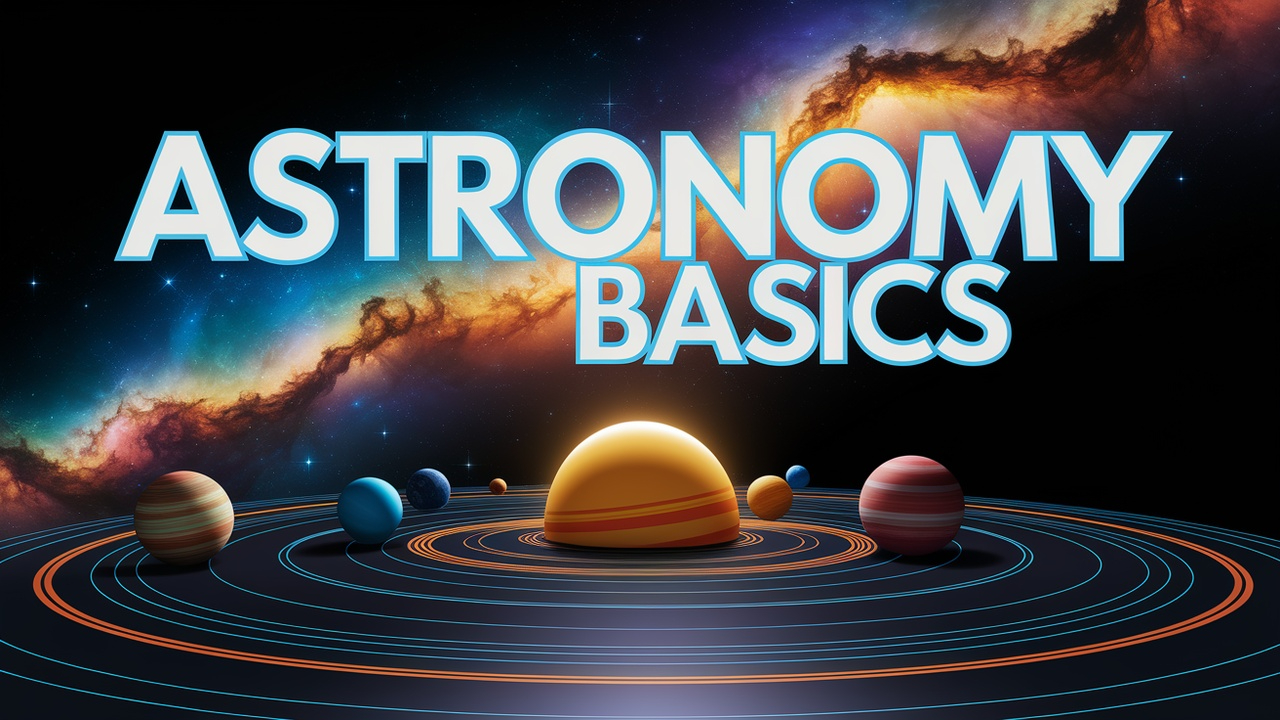
This course provides an overview of the fundamental concepts in astronomy, covering celestial bodies, cosmic phenomena, and the universe's structure. Students will explore the history of astronomy, observational techniques, and the physics governing celestial motions, culminating in a solid foundational understanding of the cosmos.
Course Levels
-
Level 1: The Basics of Astronomy
An introduction to the field of astronomy, including key terms and concepts that will be essential for understanding more complex topics.
-
Level 2: The Solar System
A closer examination of our solar system, including its formation, structure, and the characteristics of its celestial bodies.
-
Level 3: The Universe Beyond
Exploring the broader universe and the various types of celestial objects beyond our solar system.
-
Level 4: Cosmic Phenomena
Dive into fascinating astronomical phenomena and concepts that shape our understanding of the universe.
-
Level 5: Observational Astronomy
Learn about the techniques and tools used in observational astronomy, including hands-on skills for observing the night sky.
-
Level 6: Theoretical Astronomy and Cosmology
An introduction to the theoretical aspects of astronomy and cosmology, focusing on the physics that underpins astronomical observations.
-
Level 7: Current Trends and Future Directions
Explore the latest developments in astronomy and what the future holds for this ever-evolving field.
Course Topics
-
Philosophy of Astronomy and the Universe
# Philosophy of Astronomy and the Universe Astronomy, at its core, is more than just the study of celestial bodies; it is a profound exploration of our place in the universe and the nature of existen...
-
The Impact of Astronomy on Society
# The Impact of Astronomy on Society Astronomy, the science that studies celestial bodies and the universe, has significantly influenced various aspects of human society throughout history. This infl...
-
Galaxies: Types and Structures
# Galaxies: Types and Structures Galaxies are vast systems made up of stars, stellar remnants, interstellar gas, dust, and dark matter, all bound together by gravity. They are the fundamental buildin...
-
Historical Overview of Astronomy
# Historical Overview of Astronomy Astronomy, the study of celestial bodies and the universe as a whole, has a rich and varied history that spans thousands of years. This overview will take you throu...
-
Stars: Life Cycle and Classification
# Stars: Life Cycle and Classification ## Introduction to Stars Stars are massive celestial bodies composed primarily of hydrogen and helium that produce energy through nuclear fusion. They are funda...
-
Moons, Asteroids, and Comets
# Moons, Asteroids, and Comets In the vast expanse of our solar system, moons, asteroids, and comets play significant roles in understanding the dynamics of celestial bodies. Each of these components...
-
The Night Sky: Stars and Constellations
# The Night Sky: Stars and Constellations Astronomy is the study of celestial objects, space, and the universe as a whole. As we gaze up at the night sky, we are often met with a breathtaking display...
-
The Expansion of the Universe
# The Expansion of the Universe The expansion of the universe is a fundamental concept in modern cosmology and describes how the universe has been growing since its inception during the Big Bang. Thi...
-
Quantum Mechanics in Astronomy
# Quantum Mechanics in Astronomy Quantum mechanics plays a crucial role in our understanding of the universe at the smallest scales. As we explore the cosmos, we often encounter phenomena that cannot...
-
Quasars and Active Galactic Nuclei
# Quasars and Active Galactic Nuclei ## Introduction Quasars (quasi-stellar objects) and Active Galactic Nuclei (AGNs) represent some of the most luminous and energetic phenomena in the universe. The...
-
Supernovae and Stellar Explosions
# Supernovae and Stellar Explosions Supernovae are among the most energetic and luminous events in the universe, marking the explosive death of a star. This topic explores the mechanisms behind super...
-
Data Analysis in Astronomy
# Data Analysis in Astronomy Data analysis is a critical component of observational astronomy. It involves the application of statistical methods and computational techniques to extract meaningful in...
-
The Kuiper Belt and Oort Cloud
# The Kuiper Belt and Oort Cloud ## Introduction The Kuiper Belt and Oort Cloud are two distinct regions of our solar system that contain a large number of icy bodies and comets. They are critical in...
-
Citizen Science Projects
# Citizen Science Projects in Observational Astronomy Citizen science projects harness the power of non-professional astronomers and enthusiasts to contribute to scientific research and data collecti...
-
Gravity Waves and Their Significance
# Gravity Waves and Their Significance ## Introduction to Gravity Waves Gravity waves, often confused with gravitational waves, are disturbances in a fluid medium (like water or air) caused by the gr...
-
Astrobiology and the Search for Extraterrestrial Life
# Astrobiology and the Search for Extraterrestrial Life Astrobiology is a multidisciplinary field that combines elements of biology, astronomy, and geology to study the possibility of life beyond Ear...
-
Exoplanets and the Search for Life
# Exoplanets and the Search for Life ## Introduction Exoplanets, or extrasolar planets, are planets that orbit stars outside our solar system. The discovery of exoplanets revolutionized our understan...
-
The Role of Technology in Modern Astronomy
# The Role of Technology in Modern Astronomy ## Introduction Modern astronomy has been transformed by advancements in technology, enabling astronomers to explore the universe with unprecedented detai...
-
Planets and Dwarf Planets
# Planets and Dwarf Planets In this section, we will explore the fascinating celestial bodies that orbit our Sun, specifically focusing on planets and dwarf planets. Understanding the distinctions be...
-
Modeling Cosmic Structures
# Modeling Cosmic Structures In the field of theoretical astronomy and cosmology, modeling cosmic structures is crucial for understanding the universe's large-scale behavior. This topic encompasses v...
- And 15 more topics...